- About us
- Support the Gallery
- Venue hire
- Publications
- Research library
- Organisation chart
- Employment
- Contact us
- Make a booking
- Onsite programs
- Online programs
- School visit information
- Learning resources
- Little Darlings
- Professional learning
William Yang (b. 1943) is a pre-eminent Australian photographer known for an intensely sustained body of work that examines issues of cultural and sexual identity, and which unflinchingly documents the lives of his friends and community and his own lived experience with curiosity, sensitivity and humour. He is known in particular for his documentation of the Sydney LGBTIQ+ community from the 1970s onwards, including the evolution of the Sydney Gay & Lesbian Mardi Gras, and for photographic series engaging with the impact of HIV/AIDS on his friends and community, his sense of identity as a Chinese-Australian, and his family history and relationships.
Born in Mareeba, near Cairns, Yang grew up in a family who repudiated their Chinese heritage so as to escape the intolerance characteristic of mid-twentieth century Australia. He realised he was Chinese at age six, after being subjected to a bigoted taunt at school. He has recalled becoming aware of what homosexuality meant as a high school student in Cairns, when he came across an article that made him feel as if 'there were only four homosexuals in the world: Oscar Wilde, Leonardo Da Vinci, Michelangelo – and me'. He was given his first camera at seventeen, but became more serious about photography as a student at the University of Queensland, where he studied architecture and began writing and directing plays. In the late 1960s, he moved to Sydney. Having decided to make a living as a photographer, he attended numerous parties and events to take images of celebrities for the social pages of magazines, creating at the same time an unmistakeable and candid record of the city's creative cliques and subcultures. 'The arena suited me; it was more theatrical', Yang wrote in his Sydney Diary 1974–1984. 'Even as a playwright I'd always thought that real life set up better situations than you could ever think of yourself.'
By the mid-1970s his connections to the theatre and the creative arts had resulted in portraits of sitters such as artists Martin Sharp and Brett Whiteley; designers Linda Jackson and Jenny Kee; and theatre director Jim Sharman, whose friends and collaborators Yang also photographed. Two of the very first photographs purchased for the National Portrait Gallery's collection, for example, were Yang's portraits of actor Judy Davis (b. 1959), who in 1981 performed the title role in Sharman's production of Lulu for the Sydney Theatre Company and the State Theatre Company of South Australia, and writer and Nobel laureate Patrick White (1912–1990), whom Yang first photographed in 1977, backstage after a performance of White's play Big Toys, directed by Sharman. Yang's first exhibition, Sydneyphiles, at the Australian Centre for Photography in 1977, established Yang (then Willy Young) as the preeminent freelance photographer and social documenter of the period. He changed his name from Young to Yang in 1983. He has since exhibited widely in Australia and abroad, also becoming known as a storyteller through his performance works which combine spoken word monologue, memoir and slide projection – such as Friends of Dorothy, Shadows and Blood Links – and series of photographs characterised by the use of text in the form of handwritten inscriptions.
Yang's work has been included in many significant group exhibitions such as World without end (AGNSW, 2000); Don't leave me this way: art in the age of AIDS (NGA, 1994); Life Lines (QAGOMA, 2009); On the edge: Australian photographers of the 1970s (San Diego Museum of Art, 1998); Sydney Photographed (MCA, 1994); and From Bondi to Uluru (Higashikawa Arts Centre, Hokkaido, 1993). A retrospective of his photographs, Diaries, was held at the State Library of New South Wales in 1998. In 2001 the National Portrait Gallery mounted the exhibition William Yang: Australian Chinese which then toured widely in Australia. Yang has produced books including Patrick White: The late years (1995), Sadness (1996), Friends of Dorothy (1997) and China (2008). His works are held in major state galleries, the National Gallery of Australia and the National Portrait Gallery, for which Yang created the commissioned work My Generation in 2008. In 2021 Queensland Art Gallery held the major survey exhibition William Yang: Seeing and Being Seen, and published a book of the same name.
Purchased 2022
© William Yang
William Yang (age 49 in 1992)



On one level The Companion talks about the most famous and frontline Australians, but on another it tells us about ourselves.
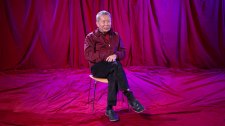
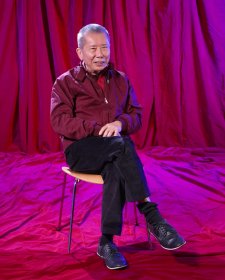
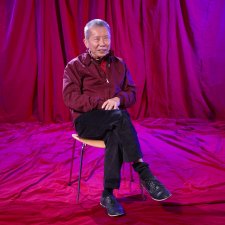
William Yang on his heritage and becoming a photographer in the 70s.
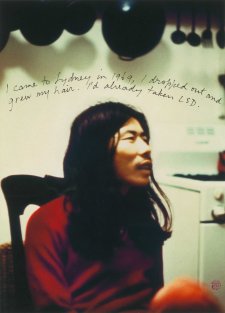
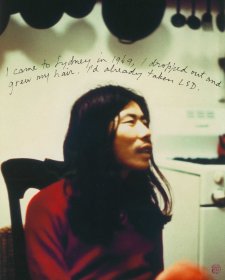
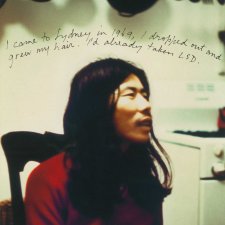
William Yang shares the stories behind his autobiographical self portraits that celebrate his cultural heritage and identity.